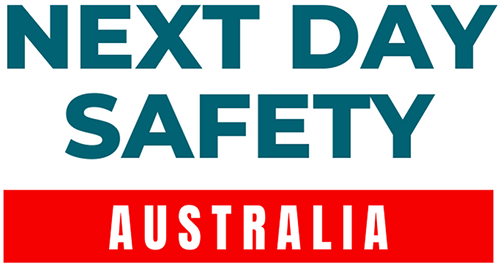6. Lockout Tagout Equipment
Effective Lockout Tagout depends on having the right gear. Physical locks and tags provide the “hands-on” security that prevents machinery from being powered. Below are some common categories of equipment:
- Safety Padlocks: Personal locks assigned to each worker. They’re usually keyed differently, so only the owner can remove their lock. For reliable, industrial-grade options, check out Lockout Tagout equipment suppliers like Next Day Safety.
- Lockout Hasps: Allows multiple padlocks to attach to a single isolation point (e.g., a circuit breaker). Essential for group tasks so each team member can apply their personal lock.
- Tags: “Danger – Do Not Operate” tags identify who locked the equipment and why. Though tags alone are insufficient for lockable points, they’re critical for communication.
- Valve & Circuit Breaker Lockouts: Specially designed devices to secure valves (gate, ball, butterfly) in the closed position or fix a breaker toggle in “off.” They’re crucial for isolating pressure/flow and electrical circuits.
- Cable Lockouts: Versatile for locking multiple valves or bigger handles. A cable threads around various points, then locks in place.
- Group Lock Boxes: Lets you place all isolation keys inside a Group Lock Box, and each worker attaches their padlock. Perfect for large teams or multiple energy sources.
A best practice is to install lockout stations at strategic points in the workplace so locks, tags, and devices are always readily available. This minimises excuses and ensures consistency.
7. Case Studies & Examples
Worst-Case Incidents
Unfortunately, Lockout Tagout failures have led to severe injuries and fatalities in Australia. For example:
- Conveyor Fatality: A Queensland worker was killed when he tried to clear a jam while the conveyor’s drive shaft remained energised. A proper lockout would have prevented the shaft from rotating.
- Mining Hydraulic Release: In one case, incomplete isolation of a hydraulic press led to a sudden pressure release that fatally injured a worker. Stored energy in the system was not bled off or locked out.
- Tag-Only Near Miss: A technician tagged a compressor but did not apply a lock. Another worker overlooked the tag and powered the compressor on. Fortunately, no one was inside it at the time, but it was a close call illustrating that tags alone cannot physically stop re-energisation.
Regulators often find that these tragedies occur because procedures were unclear, workers weren’t properly trained, or no physical lock was used on an accessible control.
Best-Practice Example
At a major food processing plant, a fully documented Lockout Tagout program ensures every piece of equipment has a specific isolation checklist. Before maintenance:
- The machine is shut down through its normal controls.
- All energy sources (electrical supply, pneumatic lines, steam valves) are identified and isolated using valve lockouts and circuit breaker lockouts.
- Each technician places their personal padlock and tag on the isolators or on a lock box system if there are multiple lock points.
- A designated person tests the start button to confirm no power remains.
No one removes their padlock until they personally verify their part of the job is complete and the area is clear. This approach eliminates human error or assumptions. The result? Zero lockout-related injuries over multiple years.
Conclusion
From these examples, it’s clear that Lockout Tagout saves lives. Yes, it requires discipline and training to implement effectively. But the alternative—risking fatal accidents and legal consequences—is far worse. Whether you’re running a mine, a construction site, or a small manufacturing workshop, Australian WHS laws expect you to have robust Lockout Tagout policies, procedures, and training in place.
Next Day Safety is proud to support workplace safety by providing a comprehensive range of Lockout Tagout equipment. From safety padlocks and tags to group lock boxes and valve lockout devices, we’re here to help Australian businesses comply with regulations and keep their teams safe.
Remember: No one should ever be hurt by a machine that unexpectedly starts or releases energy. Implementing Lockout Tagout is a straightforward yet powerful way to achieve that goal.
This guide is designed for educational purposes and does not replace professional legal advice. Always check the latest WHS regulations in your specific State or Territory, and consult qualified safety professionals where necessary.
